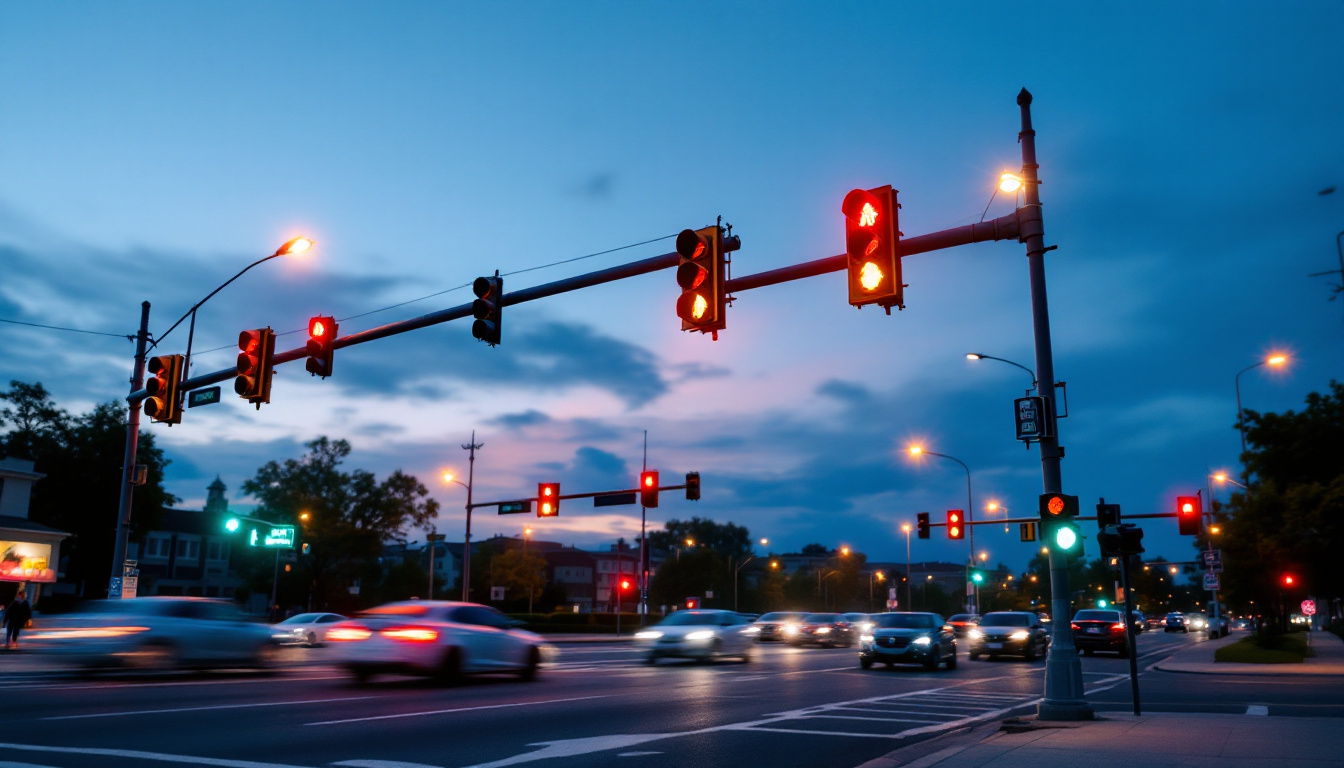
As the demand for smart and energy-efficient lighting solutions continues to rise, outdoor motion sensor lights have become increasingly popular among lighting contractors. These devices not only enhance security but also provide convenience and energy savings. However, like any technology, they come with their own set of advantages and disadvantages. This article delves into the pros and cons of light motion sensors for outdoor use, helping lighting contractors make informed decisions for their projects.
Light motion sensors are devices designed to detect movement within a certain range and activate outdoor lighting accordingly. They can be used in various settings, including residential, commercial, and industrial environments. Typically, these sensors utilize infrared technology or microwave technology to detect motion. When a person or object enters the sensor’s field of view, the lights turn on, providing illumination only when needed. This not only enhances safety and security but also contributes to energy efficiency, as lights are not left on unnecessarily.
There are primarily two types of motion sensors used for outdoor lighting: passive infrared (PIR) sensors and microwave sensors. PIR sensors detect changes in heat emitted by objects, such as humans or animals, while microwave sensors emit microwave pulses and measure the reflection from moving objects. Each type has its own unique features, making them suitable for different applications. For instance, PIR sensors are generally more cost-effective and energy-efficient, while microwave sensors offer a broader detection range and can penetrate obstacles like foliage, making them ideal for more complex environments.
Outdoor motion sensors are versatile and can be employed in various scenarios. They are commonly used for security lighting, illuminating pathways, and enhancing the ambiance of outdoor spaces. Additionally, they can be integrated with smart home systems, allowing users to control their outdoor lighting remotely. Beyond residential use, these sensors are also invaluable in commercial settings, such as parking lots and building perimeters, where they can deter potential intruders by ensuring that lights activate at the slightest hint of movement. Furthermore, in industrial environments, motion sensors can help streamline operations by automatically lighting work areas when personnel are present, thus improving safety and productivity.
Moreover, the integration of motion sensors with advanced technologies such as artificial intelligence is paving the way for more intelligent lighting solutions. For instance, some modern systems can learn patterns of movement over time, adjusting their sensitivity and response based on typical activity levels. This not only enhances security but also allows for a more tailored lighting experience, adapting to the unique needs of each environment. As technology continues to evolve, the potential applications for light motion sensors are expanding, promising even greater convenience and efficiency for users.
For lighting contractors, the benefits of installing light motion sensors can be significant. Understanding these advantages can help contractors provide better solutions to their clients while also improving their own operational efficiency.
One of the most compelling advantages of light motion sensors is their energy efficiency. By ensuring that lights are only activated when needed, these sensors can significantly reduce energy consumption. This not only leads to lower electricity bills for clients but also contributes to a more sustainable environment. For contractors, promoting energy-efficient solutions can enhance their reputation and attract environmentally conscious clients.
Outdoor motion sensors play a crucial role in enhancing security. By illuminating areas when movement is detected, they deter potential intruders and provide a sense of safety for homeowners and businesses alike. Lighting contractors can emphasize the security benefits of these systems, making them an attractive option for clients concerned about safety.
Motion sensor lights offer unparalleled convenience. Homeowners no longer need to fumble for switches in the dark, as the lights activate automatically when they approach. This feature is particularly beneficial for outdoor spaces, where visibility may be limited. For contractors, this means they can offer clients a modern solution that aligns with the growing trend of home automation.
While the advantages of outdoor motion sensors are compelling, there are also several drawbacks that lighting contractors should consider. Understanding these limitations can help contractors set realistic expectations for their clients.
One of the most common issues with motion sensors is the potential for false triggers. Factors such as animals, wind, or passing vehicles can inadvertently activate the lights, leading to unnecessary energy consumption and frustration for homeowners. Contractors should be prepared to address these concerns and educate clients on the importance of proper sensor placement and settings.
Motion sensors have a limited detection range, which can vary based on the type of sensor and its specifications. If the sensor is not positioned correctly, it may not detect movement effectively, resulting in dark areas that remain unlit. Lighting contractors must carefully assess the layout of outdoor spaces to ensure optimal sensor placement, which may require additional time and effort during installation.
Outdoor motion sensors are exposed to various weather conditions, which can affect their performance over time. Dust, rain, and extreme temperatures can lead to malfunctions or reduced sensitivity. Contractors should inform clients about the importance of regular maintenance and possibly offer ongoing support to ensure the longevity and reliability of the installed systems.
When selecting motion sensors for outdoor lighting projects, contractors must consider several factors to ensure they choose the right product for their clients’ needs.
As previously mentioned, the type of sensor—PIR or microwave—will influence the performance and application of the motion sensor. PIR sensors are generally more energy-efficient and cost-effective, making them suitable for residential applications. In contrast, microwave sensors may be better for larger commercial spaces where a wider detection range is necessary.
Each motion sensor comes with a specified detection range and angle. Contractors should assess the outdoor space and determine the optimal specifications needed to cover the area effectively. A sensor with a wider detection angle may be necessary for expansive yards or commercial properties, while a narrower angle may suffice for smaller residential spaces.
Many modern motion sensors come with adjustable settings, allowing contractors to customize the sensitivity, duration of light activation, and even the time of day when the sensor is active. These features can enhance the user experience and reduce the likelihood of false triggers. Contractors should consider recommending sensors with adjustable settings to their clients for greater flexibility.
The installation process for outdoor motion sensors can vary depending on the type of sensor and the specific requirements of the project. Here are some key considerations for lighting contractors during installation.
Proper placement of motion sensors is critical for maximizing their effectiveness. Contractors should aim to position sensors in areas with a clear line of sight, away from obstructions such as trees or buildings. Additionally, placing sensors at a height that minimizes the risk of false triggers from small animals is essential for maintaining functionality.
Outdoor motion sensors require a reliable power source, which may involve running electrical wiring. Contractors should ensure that they follow local electrical codes and safety regulations during installation. Additionally, considering solar-powered options can be an attractive alternative for clients looking for energy-efficient solutions without the need for extensive wiring.
Once the installation is complete, testing and calibrating the motion sensors is crucial. Contractors should verify that the sensors are functioning correctly and adjust the settings as needed to optimize performance. This step not only ensures client satisfaction but also minimizes the likelihood of service calls due to malfunctioning sensors.
The landscape of outdoor motion sensor technology is continually evolving. Staying informed about the latest trends can help lighting contractors remain competitive and offer cutting-edge solutions to their clients.
As smart home technology becomes more prevalent, the integration of outdoor motion sensors with smart home systems is on the rise. This allows homeowners to monitor and control their outdoor lighting remotely, enhancing convenience and security. Contractors should consider offering smart motion sensors as part of their product lineup to meet the growing demand for connected solutions.
Advancements in technology are leading to improved sensitivity and detection algorithms for motion sensors. Newer models are designed to minimize false triggers while maintaining reliable performance. Contractors should stay updated on these advancements to provide clients with the most effective and efficient solutions.
Emerging energy harvesting technologies are making it possible for motion sensors to operate without traditional power sources. These innovations could lead to more sustainable solutions for outdoor lighting, reducing the reliance on electricity and enhancing the appeal of motion sensors for environmentally conscious clients.
Light motion sensors for outdoor use offer a range of benefits and challenges for lighting contractors. By understanding the pros and cons, as well as the latest trends in technology, contractors can make informed decisions that enhance their service offerings. Ultimately, the goal is to provide clients with efficient, reliable, and convenient lighting solutions that meet their unique needs.
As the industry continues to evolve, staying informed and adapting to new technologies will be key for lighting contractors looking to thrive in a competitive marketplace. Embracing the potential of outdoor motion sensors can lead to satisfied clients and successful projects.
Ready to elevate your lighting projects with the latest in outdoor motion sensor technology? At LumenWholesale, we provide lighting contractors with the highest quality, spec-grade lighting products at prices that can’t be beaten. Say goodbye to inflated markups and hello to superior lighting solutions that fit your budget. Our wide selection is designed to meet the most rigorous industry standards, ensuring you deliver reliable and high-performance lighting to your clients. With the added convenience of free shipping on bulk orders, LumenWholesale is your go-to source for premium lighting without the hassle. Don’t compromise on quality or value—choose LumenWholesale for Wholesale Lighting at the Best Value.

Unlock the secrets of discount grow lights with our comprehensive guide tailored for lighting contractors.

Discover the transformative role of 8′ LED shop light fixtures in the lighting industry.

Discover the intricate workings of stop lights and their significance for lighting contractors.

Discover the latest innovations in electric whips and how they’re transforming the lighting industry.